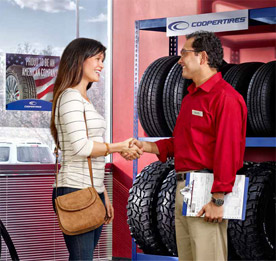Tire Solution: The Influence of Weather Condition Problems
When it comes to ensuring optimal efficiency and safety on the roadway, recognizing the effect of weather conditions on tire service is essential. In this discussion, we will explore the elaborate connection between weather conditions and tire solution, losing light on the relevance of weather-specific tire upkeep techniques and factors to consider.
Warm and Tire Performance
When exposed to high temperature levels, tires experience modifications in performance that can dramatically affect vehicle security and handling. The heat created from prolonged driving or warm weather condition problems triggers the tire rubber to soften, leading to lowered walk life and raised wear.
Additionally, high temperatures can increase the process of tire aging, triggering the rubber to deteriorate quicker. This can cause cracks, protrudes, and various other types of damages that compromise the structural honesty of the tire. To minimize the impacts of warm on tire efficiency, chauffeurs need to on a regular basis check their tire pressure, revolve tires to ensure even put on, and inspect for any type of indicators of damages. Additionally, utilizing tires especially designed to stand up to heats can help preserve ideal efficiency and security when driving.
Cold Weather Condition Impacts
Winter problems can have a substantial effect on tire efficiency and safety and security. As temperature levels decrease, tire rubber can solidify, causing reduced traction on icy or snow-covered roads. In cold weather, tires might additionally shed atmospheric pressure a lot more quickly, which can affect dealing with and fuel performance. In addition, cool temperature levels can trigger tire sidewalls to stiffen, increasing the threat of damages from holes or other roadway dangers.
To reduce the effects of cool weather condition on tires, it is important to frequently check tire stress and inflate them to the producer's recommended degrees. Using winter months or all-season tires created for winter conditions can additionally enhance traction and hold on icy or snowy roads - morris tire and alignment. Proper tire upkeep, including routine evaluations for wear and damages, becomes much more essential throughout colder months to make certain optimal efficiency and safety
Rainy Conditions Impact
During rainy conditions, tire performance and safety can be significantly affected by the damp roadway surfaces and lowered presence. The step pattern of tires plays an essential role in maintaining grip on damp roads. Tires with worn-out treads are extra vulnerable to hydroplaning, where a layer of water develops in between the tire and the road surface area, bring about loss of grip. To fight this, chauffeurs should frequently examine their tires for adequate step depth and consider purchasing tires particularly developed for wet conditions.

Snow and Tire Safety And Security
Snow-covered roads posture unique obstacles for drivers, highlighting the importance of appropriate tire option and maintenance. When driving in snowy problems, having the appropriate tires can make a considerable distinction in safety and efficiency. Winter months tires are developed with unique rubber compounds and tread patterns to give better grip on snow and ice contrasted to all-season tires. The much deeper footsteps and sipes of winter tires help hold the roadway much better, reducing the risk of slipping and moving.
In addition to using winter tires, it is important to guarantee they are appropriately blown up. Winter can create tire stress to go down, impacting grip and handling (morris tire and alignment). On a regular basis inspecting and preserving the right tire pressure is necessary for ideal performance in snowy conditions

Weather-Related Tire Upkeep
When confronted with numerous weather conditions, correct tire maintenance ends up being an important facet of vehicle security and efficiency. Weather-related tire maintenance includes a variety of practices targeted at making certain optimal tire feature and recommended you read long life in different weather situations. One vital aspect of weather-related tire maintenance is tire stress law. Varying temperature levels can create tire pressure to vary, affecting grip and gas efficiency. Frequently adjusting and inspecting tire pressure according to maker referrals is essential for secure driving in changing weather condition conditions. Furthermore, tire step deepness plays a significant role in dealing with different weather condition aspects. Tires with appropriate step deepness give far better grasp on wet or icy roads, reducing the risk of skidding or hydroplaning. When walk wear reaches a certain deepness is essential for keeping grip and stability in unfavorable weather, inspecting tire tread regularly and replacing tires. By focusing on weather-related tire upkeep, chauffeurs can enhance safety, boost lorry efficiency, and prolong the life-span of their tires.
Verdict
In final thought, climate problems have a significant effect on tire efficiency and safety and security (morris tire and alignment). special info From warmth influencing tire pressure and wear to chilly climate lowering traction, it is important to think about the climate when keeping and making use of tires.
In this discussion, we will explore the complex partnership in between climate problems and tire service, shedding light on the value of weather-specific tire maintenance practices and considerations.

Comments on “Conserve Big with Mopar Tire Service Specials: Best Deals and Professional Care”